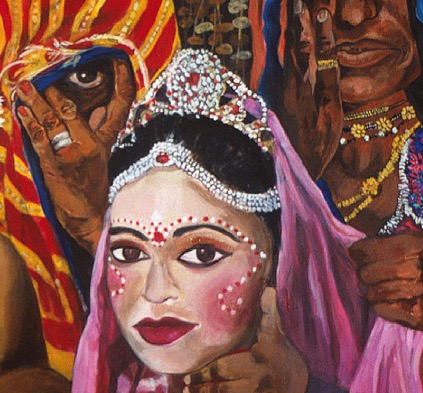
Note 18
Why write about sexual violence? Must any discussion of rape or sexual violence be confined to television news and crime statistics? Or, do we wield our fiction in a way that allows us to wear the wounds of rape and assault? Do we only listen to the lived experience of first-person testimonies? Do our stories have the power to call for justice? Or can we break our silence as we mask ourselves in the voice of a protagonist who has endured sexual violence?
And, how do we write about it? When we put out a call for submissions for this issue, these were some of the questions we had in mind. An email from Kuzhali Manickavel, resonates with our enquiry: ‘I strongly believe that what we desperately need right now, not just in terms of fiction but politically as well, are new ways of talking about this issue.’
With this issue we bring you a multitude of stories, reportage, testimonies, fiction and non-fiction on the theme of sexual and gender violence. We have been stunned by the overwhelming response we received to our submissions call, and, in the end, could not accommodate even all our favourite writers.
Here are the pieces we decided to carry: Subimal Misra, translated from the Bengali by V Ramaswamy, subverts literary conventions in his trademark experimental style as he writes on the sex workers of Sonagachi, Asia’s largest red-light district. Vrinda Baliga and Farah Ghuznavi explore child sexual abuse in the context of the comfort zone of family. In Kuzhali Manickavel’s story, a woman experiences violation everyday in a public space, and suffers the consequent effects on her mental and physical health. The spirited and incorrigible protagonist in Vasudhendra’s work, translated from Kannada by Rashmi Terdal, undegoes the experience of being outcast and transgendered in rural Karnataka where feudal ideas of masculinity hold sway. Fehmida Zakeer’s story imagines what happens when the burden of tradition exploits the aspirations of modern young women. In the urbanised, elite milieu of New Delhi, Amrita Tripathi shows that women are at risk as they negotiate the corridors of power. Nishita Jha’s debut shortstory, set in the backdrop of a dysfunctional marriage, explores perverse voyeurism.
Another debut that we celebrate in these pages is Gayatri Jayaraman’s short story, which wrenches back the lost autonomy of the female body through the act of writing. In Zui Kumar-Reddy’s piece, also a first time publication,the next generation has a visceral response to sexual violence which has been buried in family memory. In Shabhnam Nadiya’s brave work of creative non-fiction, she lends her voice to a victim of physical abuse by examining personal pain.
Rashna Imhasly-Gandhy’s insightful essay invites us to re-examine and reclaim myth; Chitra Ganesh’s stunning artwork represents this simultaneous reclamation and rebellion, as does Pavitra Srinivasan’s nuanced retelling of a Tamil folk tale.
We feature, for the first time in English, a novella by Ajay Navaria translated by Sudarshan Purohit, that examines the deadly mix of caste, class, modernity and patriarchy coming together in a horrific act of sexual violence. Through his protagonist Usha, he dismantles and grinds to dust that construct called honour or izzat that forces shame upon violated women.
Salil Tripathi’s collection of testimonies from the Bangladesh War point to the use of rape as weapon of war. Sunny Hundal looks at the constructs, the mindset and the reality of the statistics that perpetuate sexual and gender violence. Neha Dixit’s essay on the Muzzaffarnagar riots investigates rape in the context of communal violence while Urvashi Butalia’s powerful paper calls attention to the silencing of sexual violence in the subcontinent and the culture of impunity that has been fostered around it.
We hope that these stories and essays will provoke discussion, engender multiple ways of looking at sexual violence, and help us break the silence. This issue, we hope, will illuminate how pervasive sexual violence is in different situations and contexts, how it influences all our lives, how it interacts with existing inequities, how it is used as a weapon, and how it is often erased out of public debate.
With this issue of Out of Print we believe it is important that we extend this conversation beyond the realm of literary writing. We invite readers, to join us through a new initiative, Mapping Sexual Violence to respond, discuss, write about other instances of sexual violence that they may have experienced, know about or been affected by.
Please do write to us at mappingsexualviolence@gmail.com. We would love to hear from you.
Acknowledgements
We would like to acknowledge the contributions of Punyashloka Biswal, who gave us so much of his time, and Mira Brunner and Rob Singleton for designing the interface of the Mapping Sexual Violence site.
We would also like to thank Bunty Chand, Vivek Shanbag, Nilanjana Roy and Jerry Pinto for their help and support.
And most of all, we are indebted to Indira Chandrasekhar for generously giving us this space. Without her help and support, not to mention her keen editing eye and her attention to detail, we would have never been able to pull this off. She encouraged us to keep persevering, she set us no boundaries, she had an infectious enthusiasm and drive that saw us through this project.
Meena Kandasamy & Samhita Arni
The art on the cover of Out of Print 18 is by Chitra Ganesh.
